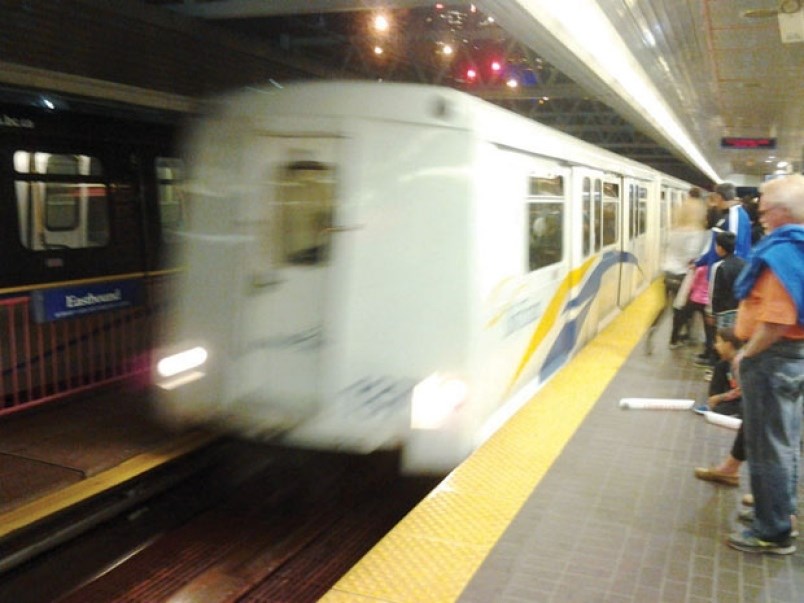Think of it. The North Shore to downtown in a matter of minutes. Express service. No traffic.
The province is set to begin the first-ever study into the feasibility of a rapid transit line connecting the North Shore and downtown Vancouver.
Transportation and Infrastructure Minister Claire Trevena announced the feasibility study Tuesday.
“Our government recognizes that commuters on the North Shore are frustrated with congestion,” she said in a release. “With this feasibility study, we are exploring potential solutions that help people move around more easily, which will improve quality of life.”
Former City of North Vancouver mayor Darrell Mussatto began calling for a study into a tunnel under Burrard Inlet, in early 2017. And North Vancouver-Seymour MLA Jane Thornthwaite has been lobbying for a North Shore SkyTrain link since later that year.
But the study’s genesis is in the Integrated North Shore Transportation Planning Project, which was spearheaded by North Vancouver-Lonsdale MLA Bowinn Ma in 2018. That project brought together all three levels of government to study and prioritize transportation improvements for the North Shore.
“I’m absolutely thrilled to see us move forward,” Ma said. “This one is definitely a very exciting opportunity for us.”
INSTPP recommended further study of a 3.2-kilometre Lonsdale Quay-Waterfront Station tunnel, “which also happens to be the widest, deepest part of Burrard Inlet,” Ma acknowledged.
The study approved by the province this week will consider all possible routes spanning the inlet. The study will be broken up into two pieces. Over the summer, the province and TransLink will determine whether it’s even physically possible to build a tunnel or bridge to Vancouver, how it could plug into the rest of the system, whether the existing and future land use plans could support a rapid transit line with ridership, and some notional costs.
“To be realistic about this, crossing the Burrard Inlet with rapid transit is not straightforward,” Ma said. “There was some preliminary geotechnical work that was done in the 1960s, specifically looking at a Brockton Point connection but there has, to this date, been no comprehensive feasibility study to fully assess what viable connections there are in terms of rapid transit.”
After that, researchers will drill down into more specific engineering and transportation planning “in order to make sure we really have the right solution for the region,” she said.
That portion of the project is likely going to be finished in early 2020, Ma said.
The study will also consider, at a high level, an expanded network of cross-inlet commuter ferries, like SeaBus.
It so happens the beginning of the feasibility study comes just weeks after the launch of Transport 2050, TransLink’s planning process for the next round of major transit improvements.
If North Shore residents support the idea of cross-inlet rapid transit, they should make that clear during the public consultation process, which is gathering feedback at transport2050.ca. That will help get it on the agenda of the Mayors’ Council on Regional Transportation, which will eventually have to approve the project and figure out how to fund it, Ma said.
By that time, it will be in competition with other big-ticket transportation priorities in the Lower Mainland, so the North Shore will have to demonstrate its willingness to support the transit line with affordable housing and places for employment within walking distance, Ma said.
“We have to recognize that this isn’t a done deal. The North Shore – all of us – have to continue to work together in order to prepare the North Shore for rapid transit in the future. That means committing to making public transit the way forward for our region,” she said.
In the release, City of North Vancouver Mayor Linda Buchanan praised the co-operation between governments that made the announcement possible.
“It also brings us a critical step closer to addressing traffic issues in a meaningful way. This is the kind of bold action we need to take as we work to become the healthiest small city in the world,” she said.
Half of the funding for the $500,000 study is coming from the province. The rest is being shared by the three North Shore municipalities and the City of Vancouver.



